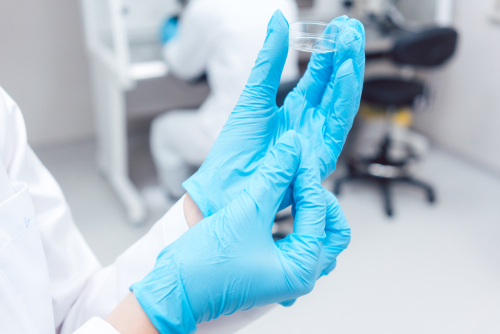PGD Increasingly Used With Successful IVF Programs
Preimplantation genetic diagnosis or (PGD) is being used increasingly in popularly reputed fertility centers to dramatically improve the scope and chances of successful IVF pregnancy. Intended parents, who have experienced prior IVF failures with unexplainable reasons, have received a brilliant ray of hope with PGD. As per estimation, half of all IVF failures are not able to be explaining the reason behind such failure with an apparent problem with the quality of the embryo. However, for many couples, this statistic is quite misleading. Many reputed IVF centers inspect very closely at the appearance of embryos with the use of the microscope as the fertility experts initiate to determine the quality of an embryo. As a matter of fact, most embryos are given “good” marks while demonstrating an appropriate number of cell divisions in the process of a growth cycle. As the individual cells of an embryo seem to have a uniform size in the absence of cellular “fragments”, it shouldn’t be considered to be a problem in the growth progress of the embryo.
Single Cycle IVF Success Following PGD
The single cycle IVF success rates can be significantly increased by transferring 2 to 3 number of chromosomally normal embryos.
As genetically normal embryos are utilized, the chances of healthy pregnancy we are increased. The rate of implantation is also raised with the implementation of PGD. That means the chances of every single embryo how to form a successful dissertation is largely influenced and accelerated by PGD. PGD analysis is required to determine whether embryos are chromosomally normal or not. Fertility experts execute this procedure while selecting the embryos for transfer to the mother. In case of genetically normal embryos, the count of each of 22 chromosome types in addition to one set of XX female or one set of the XY male chromosomes should be 2 (and only 2). Any number which is more or less than 2 who will develop into defective embryos. The medical terminology for such condition is “aneuploidy”. Under such circumstances, the embryo fails to develop. The implantation procedure is not successful and the pregnancy is miscarried. In case the baby is delivered, there are greater chances of it being a defective baby.
PGD is an important step that allows how to identify and separate the chromosomally normal embryos from the low-quality ones. This helps in assisting the couples who have experienced failed IVF in other programs. Thus, there is no chance of abnormal embryos to be transferred to the mother. With the help of accurate genetic information, the fertility experts can assure the certainty of embryos that truly provide a chance of healthy pregnancy is the ones returned to the uterus. PGD analysis of embryos helps in acquiring dramatic improvements in IVF success to intended parents who have faced prior IVF failures.
Successful Use of PGD for Recurrent IVF Failure
Intended parents who have faced prior IVF failures considering PGD have one of the following conditions:
- Previous experience of IVF failure with unexplained reasons
- Repeated miscarriages in previous conceptions
- Age of the mother crossed over 38
- Development of pregnancy with a chromosomally abnormal fetus
- Polycystic ovary syndrome
- Ovarian hyperstimulation syndrome present in the family line
- Hemophilia or any other Heritable medical condition present in the mother or in her prior child
- Gender selection for family balancing)
- The desire of intended parents to have multiple births with the transfer of just one embryo or a need for donor oocytes due to Turner’s syndrome
- Premature menopause or ovarian failure
Implementation of PGD to select the best embryos is a superlative procedure in comparison to traditional methods of selection. It helps to control the rates of miscarriage than with standard IVF. More than half of couples choose PGD, who have failed multiple prior IVF attempts elsewhere!
